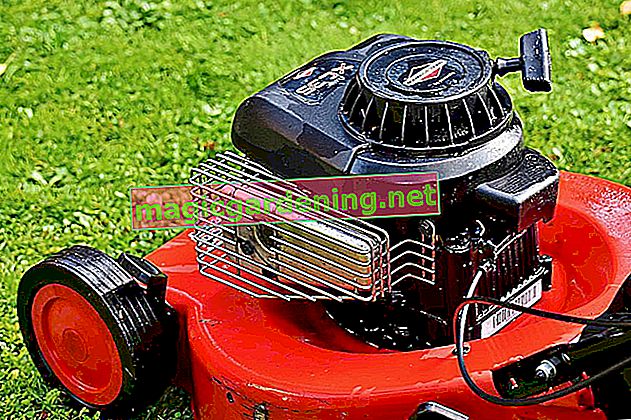
Preparatory work guarantees the best possible carburetor setting
If you are aiming for a perfect setting for the carburetor, we recommend the following preparatory measures. You will achieve the best possible result when all important components are clean and easy to use. Before you turn to the adjustment screws, do the following:
- Remove the air filter and blow it out or wash it
- Pull out the spark plug connector, unscrew the spark plug and clean all contacts
- Check the starter flap for ease of movement and remove any dirt if necessary
also read
- Adjust the lawnmower optimally - this is how it works
- Clean the carburetor on the lawnmower - this is how it works
- Lawn mower keeps going off - what to do?
Lastly, open the fuel valve, which is located on the bottom of the petrol tank on most lawnmower models. Remove the line to check for blockages and remove them if necessary.
Adjustment Instructions - How to properly adjust the carburetor
Once you have cleaned your lawnmower, check the petrol and oil levels, because the engine must be idling to adjust the carburetor. If necessary, please refill gasoline and oil. As a rule, lawnmowers have 2 adjusting screws on the carburetor: for the engine speed and the fuel-air mixture. The only tool you need is a screwdriver. To set the carburetor correctly:
- Place the lawn mower on a level surface and start it
- Let the engine run for about 5 minutes until it reaches normal operating temperature
- Screw in the screw for the motor speed so that the revolutions increase (motor becomes louder)
- Adjust the screw for the fuel mixture so that the engine runs smoothly
The increased speed of the engine makes it easier to adjust the fuel supply and should then be reversed. In the last step of the adjustment, unscrew this adjusting screw until an even idling occurs. This makes the engine audibly quieter. The fine adjustment works best if you use a tachometer for this.
Tips
When a lawnmower consistently refuses to start, the carburetor isn't always to blame. Dirty spark plugs and air filters often prevent a smooth start, as do a lack of fuel or a cutter bar blocked with wet grass.








